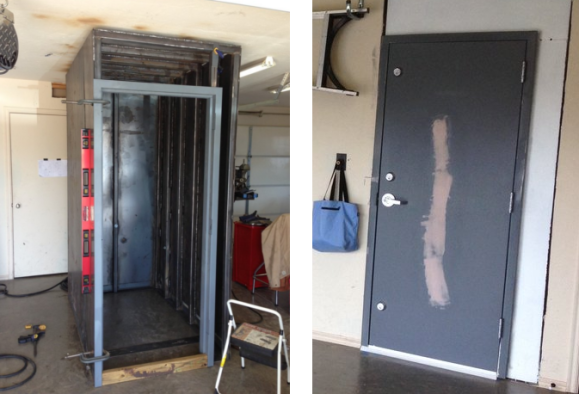
The last few years have seen a lot of dangerous storms rip through middle section of the United States. We’re surprised to hear that many residents in that part of the country don’t have basements to take refuge in when in imminent danger. But a resourceful hacker will always be able to find a way to improve their own situation. This example is particularly useful. It’s a steel storm shelter which opens into the garage.
It all starts with a cage made of square tube. With the skeleton fully assembled it is wrapped in steel plate, adding weld joints running nearly the entire length of each of the cage’s ribs. The image at the left shows the steel door frame clamped in position. Check out the finished version on the right after the shelter has been slid into place and bolted to the concrete slab.
The Reddit discussion includes a debate on whether the door should swing in or out. Swinging out means you could be trapped if the opening is blocked by debris. But there may be scientific research that proves this is a better orientation. Either way, we hope the three dead bolts, door latch, and heavy-duty hinges will stand up to the pressure if this is ever used.













